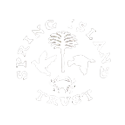Research and Conservation
Fire Ants/Vertebrate Communities
In the fall of 2016 the Trust staff completed a study on the relationship between imported fire ants and various native animal species on Spring Island. Working closely with researcher Dr. Zach Stahlshmidt from The University of the Pacific in Stockton, CA, they studied the effects that exotic fire ants are having on our ecosystem. "Community refuge use and temporal niche separation from the red imported fire ant (Solenopsis invicta)" was published in Biological Invasions, an international peer-reviewed scientific journal.
Through the research, they found that the presence of the red imported fire ant significantly reduced the biodiversity of vertebrate animals using a coverboard refuge. Treatment with Amdro fire ant bait reduced the colonization of coverboards by red imported fire ants and increased the abundance of vertebrates using the coverboards as refuges (but did not affect number of species). In addition, the Amdro did not affect native ants. Red imported fire ant removal increased vertebrate abundance under cover boards, but native ant abundance and vertebrate diversity were unaffected. Seasonality impacted refuge use by the vertebrate community more than presence of fire ants. Vertebrate diversity was highest in spring, while ant abundance was greatest in the fall.

Copyright © Spring Island Trust
40 Mobley Oaks Ln. · Okatie, SC 29909 · 843-987-7008
Site by Sans Sheriff Studio
